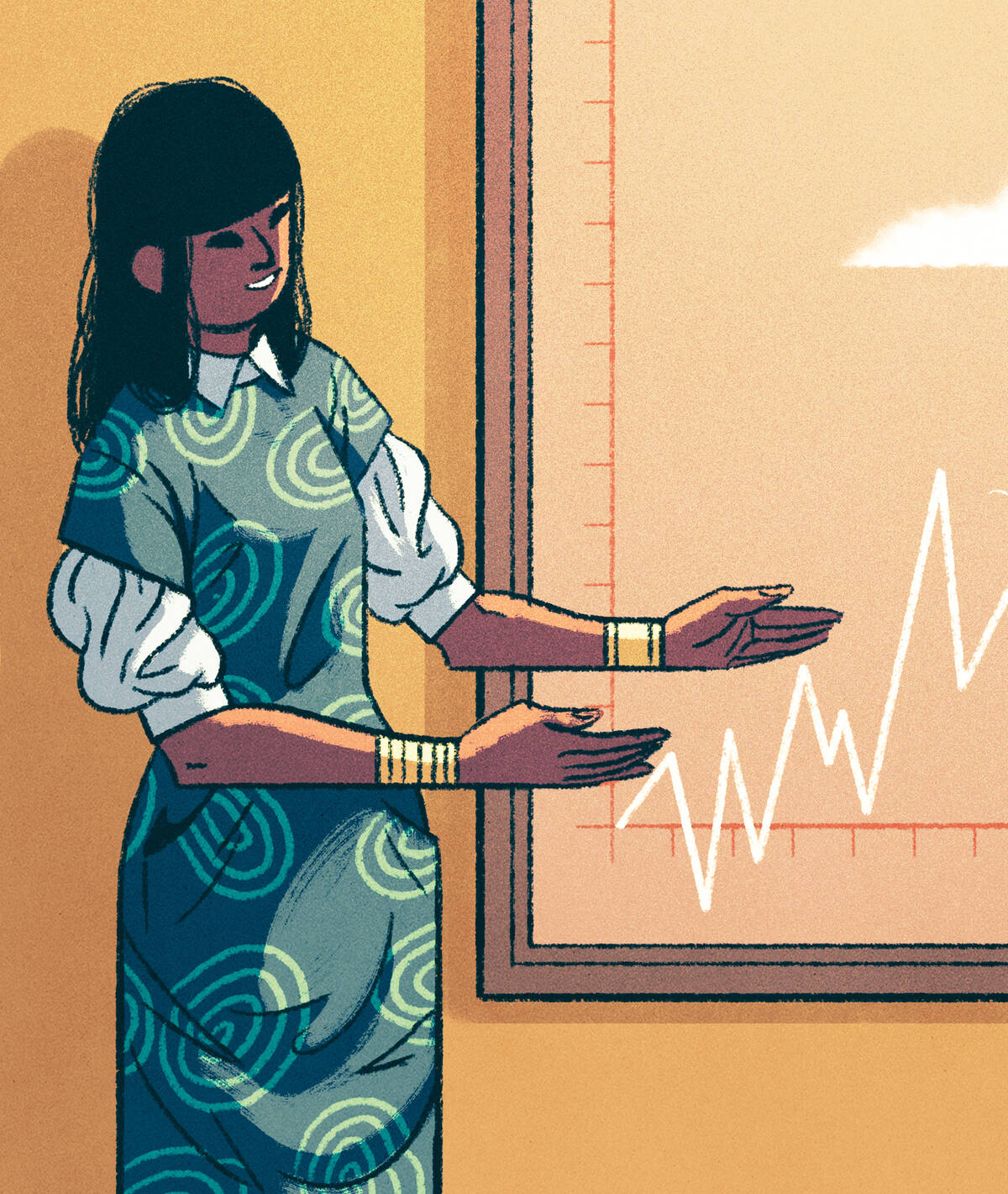Featured Faculty
James J. O'Connor Professor of Managerial Economics and Decision Sciences; (Center) Co-Director of the Global Poverty Research Lab (GPRL)

Michael Meier
China’s youth unemployment rate, after rising every month this year, reached a record high of 21.3 percent in June. Faced with hypercompetitive work environments and grim job prospects, many of the country’s young workers and middle-class professionals have embraced the “lying flat” movement—which means opting out of the culture of overwork and consumerism—while others have quit to become “full-time children.” In the wake of these startling trends, the Chinese government has stopped publishing monthly youth-unemployment data, triggering a stream of negative headlines about China’s economic “collapse.”
But is China’s economy really in dire straits? The short answer is no. Since emerging from COVID-19 lockdowns last year, the country’s rebound has been relatively strong. The Chinese economy grew by 6.3 percent year on year in the second quarter of 2023, outpacing the average annual growth rate of OECD countries.
Moreover, the International Monetary Fund expects China’s GDP to expand by 5.2 percent this year and 4.5 percent next year—much higher than its forecasts for the United States (1.6 percent and 1.1 percent, respectively), the United Kingdom (-0.3 percent and 1 percent), and Germany (-0.1 percent and 1.1 percent). Even the rise of jobless young people in China is less concerning when compared with OECD countries like Spain, Italy, and Sweden, where youth unemployment rates have hovered around 20 percent for many years.
This gap between perception and reality can be partly attributed to how China’s exceptional economic performance over recent decades has influenced the public’s expectations. For more than 20 years, the economy grew by about 10 percent per year, a streak so unusual that it was coined the “Chinese growth miracle.”
But such miracles cannot last forever, and Chinese policymakers have anticipated the inevitable slowdown for over a decade. In 2013, economists (both in China and around the world) predicted that growth would gradually fall to 3–5 percent by 2030 but that high-skilled sectors like tech would continue to expand. The decline in GDP growth, however, came much sooner and was much sharper than expected, owing to policy decisions, the trade war with the U.S., and the COVID-19 pandemic, which caused more-severe and longer-lasting economic disruptions in China than in other large economies.
The instability of blue-collar jobs is one reason why Chinese parents push their children toward academic success and entry into a selective university.
—
Nancy Qian
Besides failing to predict the timing and magnitude of China’s slowing growth, economists and policymakers misjudged who would suffer the most. It was widely assumed that high-skilled jobs, especially in tech, would be protected from the decline. After all, tens of millions
of blue-collar workers were laid off from unprofitable factories during China’s transformation from a low-productivity command economy to a high-productivity market-driven economy in the late 1990s and early 2000s.
The instability of blue-collar jobs is one reason why Chinese parents push their children toward academic success and entry into a selective university. Acceptance rates at top Chinese universities are estimated to be below 0.01 percent for students in some provinces and around 0.5 percent for those in major municipalities such as Beijing and Shanghai. For comparison, Harvard College had an acceptance rate of 3.41 percent this year.
Traditionally, the rewards have been worth the sacrifice. In contrast to lower-ranked schools in China, a degree from a top university opened doors to the best firms and almost guaranteed low levels of employment volatility. Even as unemployment steadily increased, graduates of elite institutions could count on opportunities in tech and finance—the sectors that were supposed to fuel China’s growth. But now even this cohort is facing a tough job market.
Recent economic policy decisions have not helped. Years of regulatory action to rein in Big Tech, including a crackdown on the well-financed ed-tech industry, had a chilling effect on potential growth industries; the government’s evolving approach to globalization and shifting attitudes about the market economy have spooked investors; and the ongoing real-estate crisis has constrained investment. Banks and tech companies are rapidly cutting costs, leading to a dearth of high-wage, high-skilled jobs for recent graduates in these industries.
During China’s large-scale privatization process, older workers struggled to find new employment in the rapidly changing economy. But now, employers are reluctant to lay off older workers—both because they have valuable experience and because they are protected by labor laws. The contraction in jobs therefore is felt most acutely among young people. Recent Chinese graduates face stiff competition for positions that often pay less than before.
This is a hard pill to swallow. Many graduates applying for these jobs have been studying intensively and doing hours of homework daily since early childhood. Their parents, and sometimes even their grandparents, invested money in tutors, starting as early as preschool, and spent countless hours cajoling them to study more. But what was the point if the jobs they were working toward no longer exist?
That said, soaring youth unemployment does not spell economic apocalypse for China. After decades of high economic growth, today’s youth—even with fewer people working—will be wealthier than any other generation in China’s history. The problem that youth unemployment poses for China comes down to one question: How will the mismatch between expectations and reality manifest itself?
Young people and their families may come to accept that the goals for which they have strived are unattainable, at least for now, and find satisfaction elsewhere. If they do not find such satisfaction, youth unemployment could fuel unrest and cause political instability, as it has done in the Arab world and Africa. Chinese economic policymakers will need to tread carefully.
*
This article originally appeared in Project Syndicate.